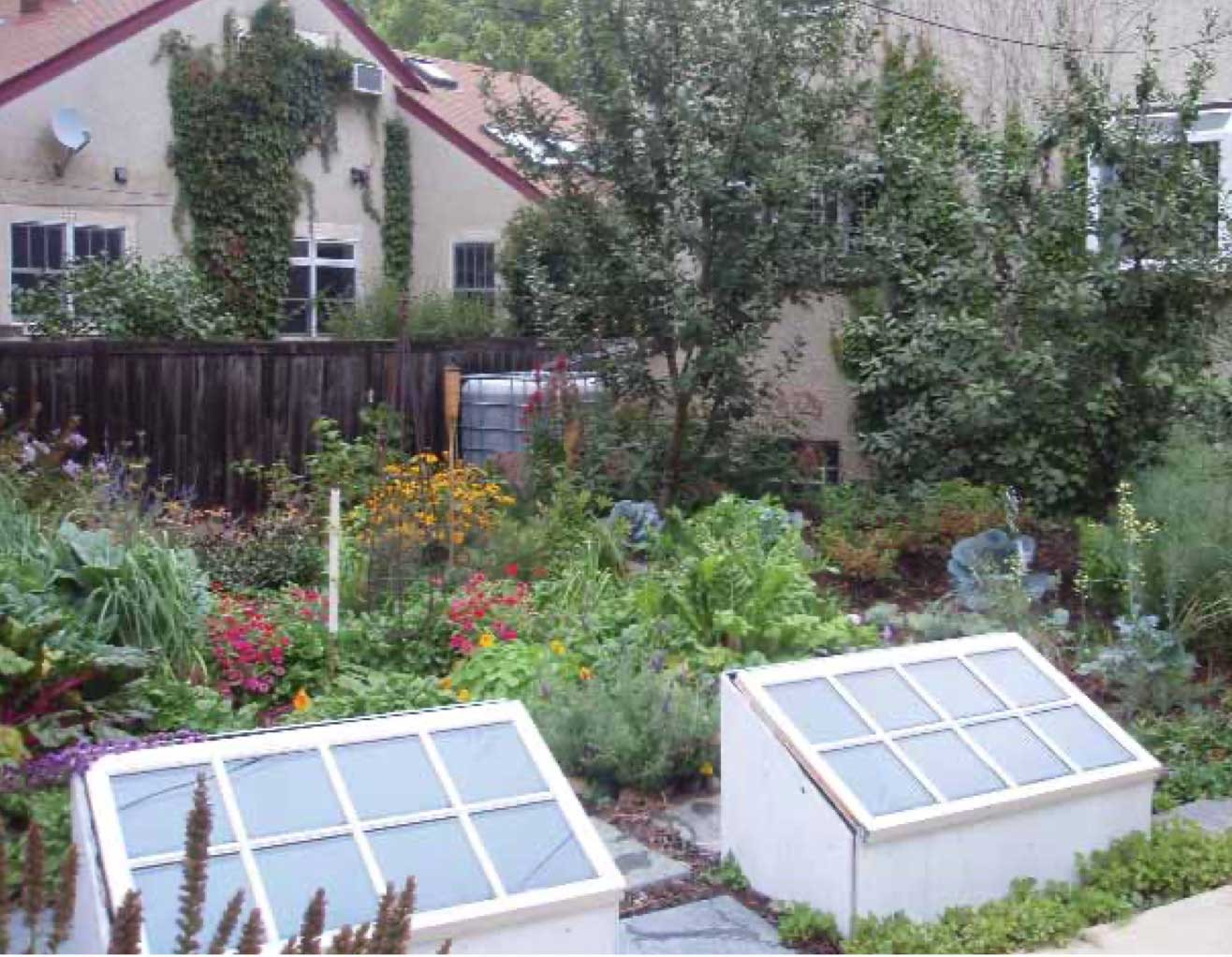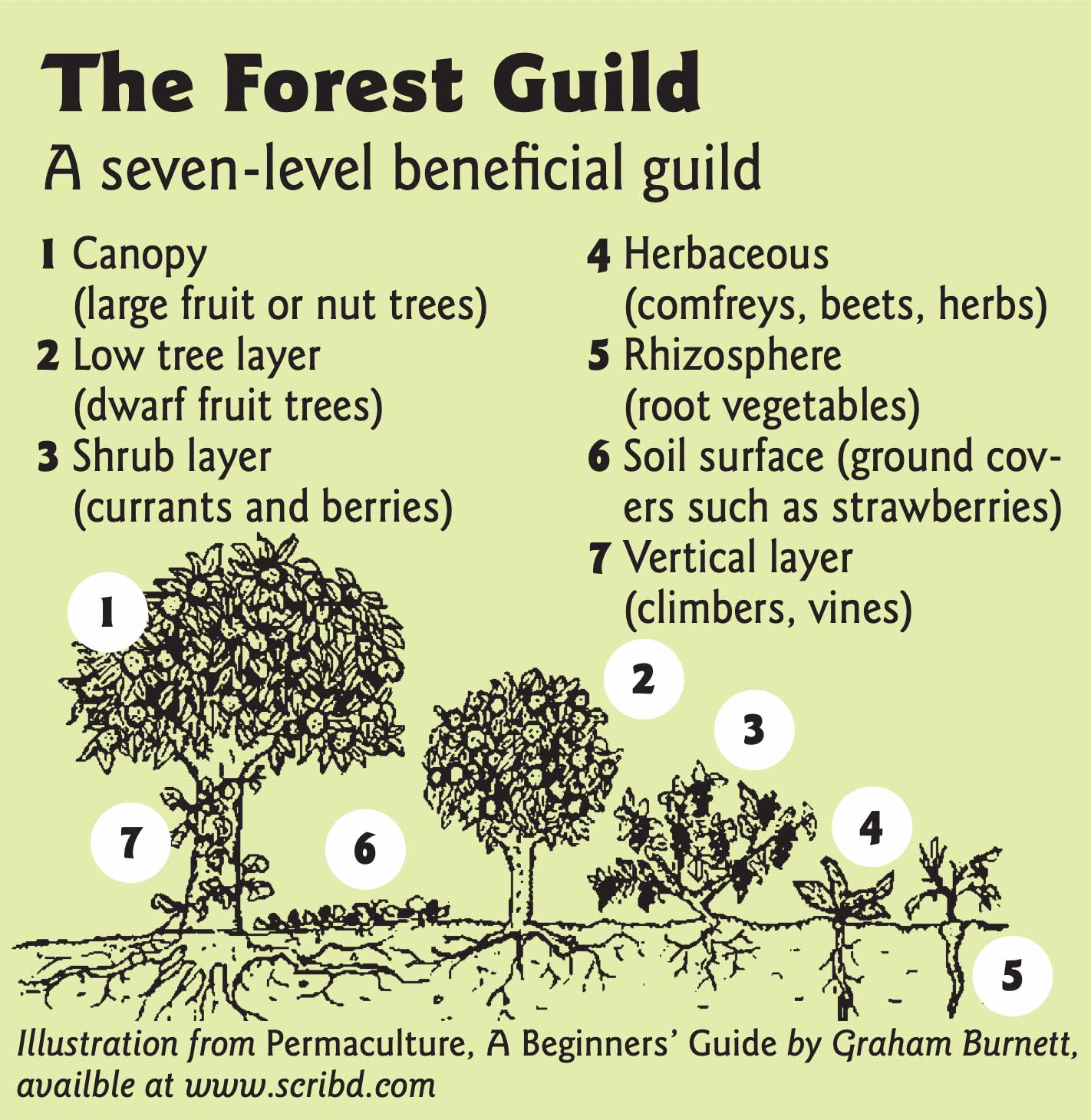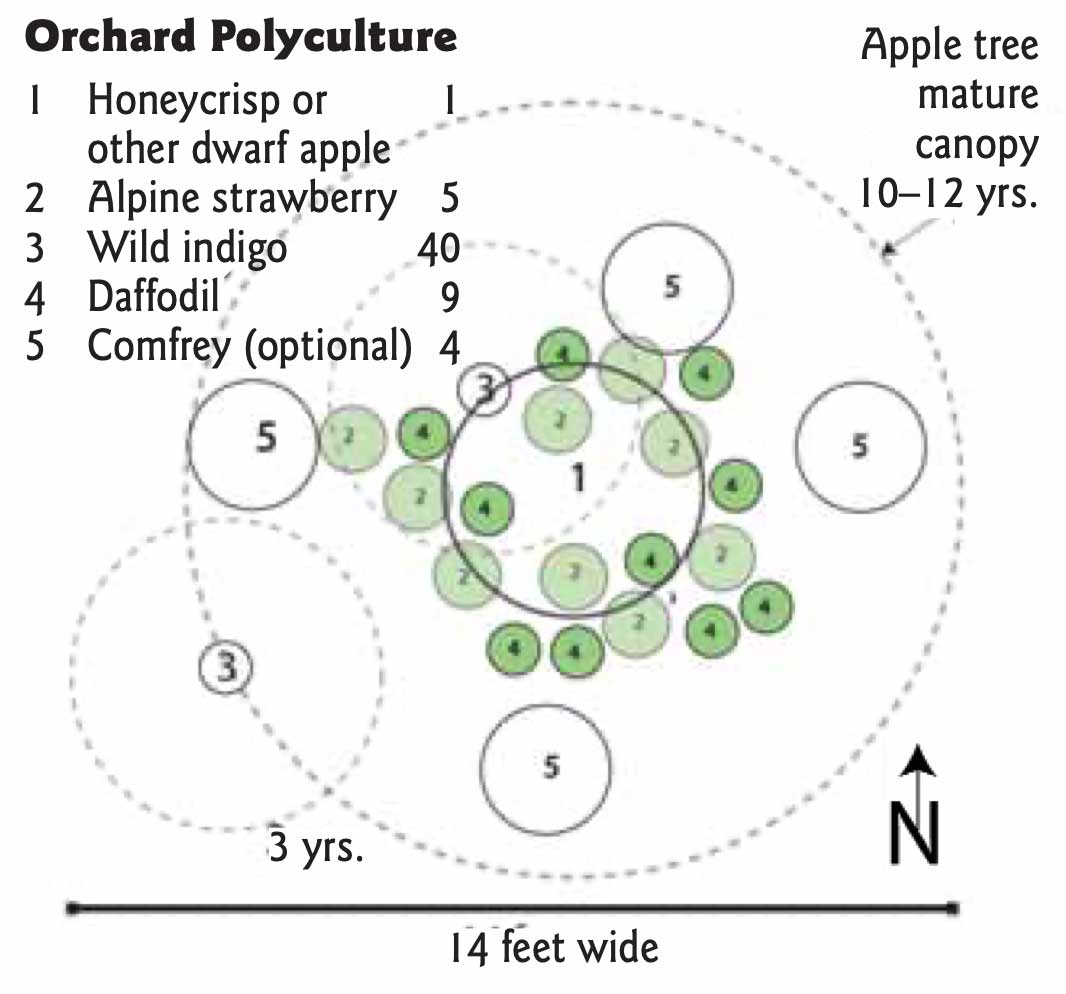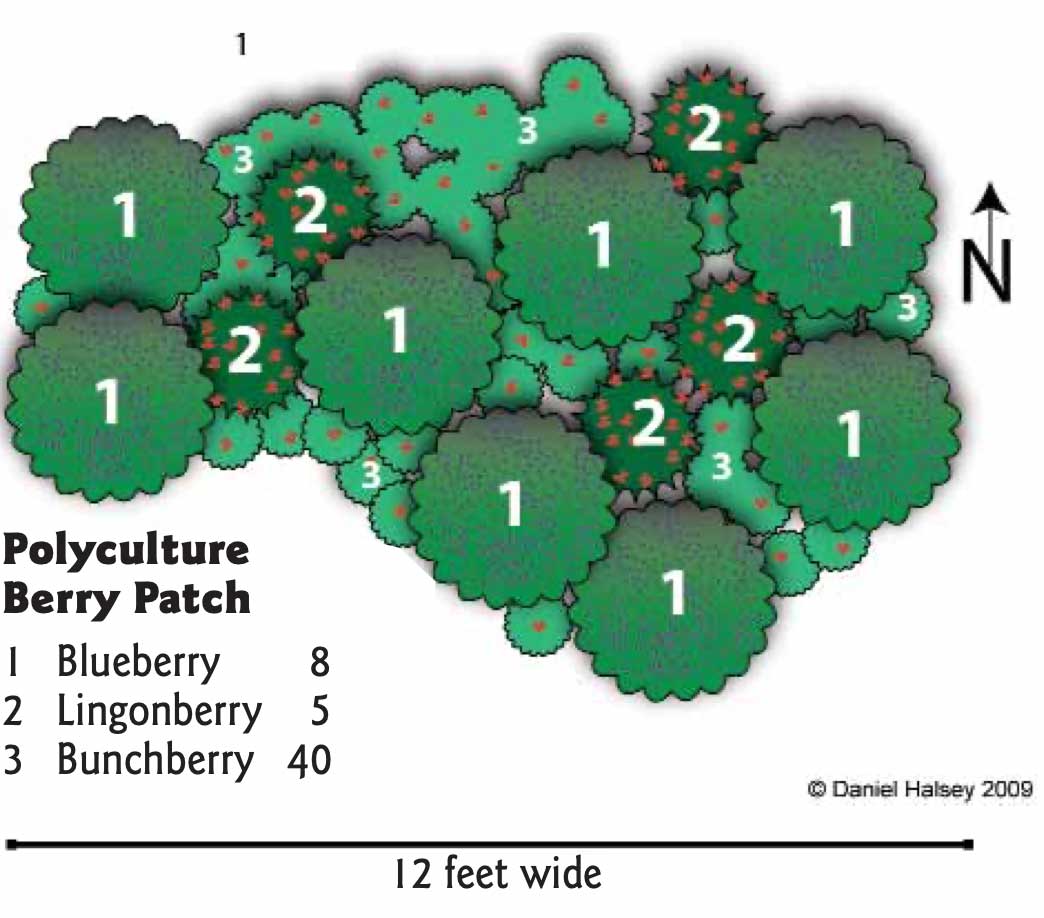
By Dan Halsey, Paula Westmoreland and Nick Jordan
Urban agriculture is exciting many folks for many reasons: sustainability, beauty, good food and personal and community well being. Cities (and suburbs) can and do produce a lot of food! Milwaukee, Detroit, and Havana are compelling examples.
Edible forest gardens are one of the most productive and delightful approaches to urban/sub-urban agriculture. A forest garden contains a range of perennial food plants artfully arranged to provide beauty, delicious and diverse food, and other good things that we get from urban trees and perennial gardens (shade, privacy, greenspace). Most urban/sub-urban trees need frequent replacement, so why not start to turn our Twin Cities into edible forest gardens? Our children will thank us!
Permaculture is a powerful set of tools for creating and growing edible forest gardens. It is the design and cultivation of ensembles of perennial plants that work well together and embody the diversity, stability and resilience of healthy ecosystems.
Permaculture is based on careful observation, clever design, thrifty storage and use of energy and materials, and faith in the power of biological and renewable resources to solve problems.
Getting Started with Edible Forest Gardens
So, how do you get started on a forest garden? The first step in any garden design is to state your vision and goals. Be as specific as possible and write in present tense.
I have an edible forest garden that produces apples, cherries, raspberries, blueberries and some vegetables. I spend a few hours each week maintaining and harvesting. It provides me with fresh fruit and vegetables during the summer months, some to give to family and friends, and some to freeze for winter use.
The next step is to create a base map of your site. Measure your site, locate your house, sidewalk, trees and other permanent objects on your map. Identify the patches or areas where you would like to locate your forest garden.
After defining your goals and creating your map, make a site assessment. Is the area you’ve selected capable of producing what you envision? What are your assets? What needs improvement? Is there enough sunlight? Enough water? How healthy is your soil? You can always make improvements and that is usually necessary, but fighting the natural tendencies of your site takes more time and money than building from what you already have.
Observation is critical during the site assessment. Check the sun/shade patterns at different times of the day and different times of the year. Go out in a rain storm and see how water flows across your site. Test your soil and check for areas of compaction. Then, based on what you find, look again at your goals and vision and make adjustments if necessary.
Designing an edible forest garden
An edible forest garden mimics the structure and function of a forest so that you have all the advantages of a healthy forest—self-renewing fertility, stability, and abundance—while providing for human needs.

In an urban area, the edible forest garden usually has six layers:
- A low canopy layer of dwarf fruit trees
- A shrub layer of berries and nuts
- A perennial layer of herbs and vegetables
- An edible groundcover layer
- An edible root layer
- A vine layer
The high tree canopy usually found in a forest can be omitted to allow enough sunlight for growing a variety of sun-loving fruits and vegetables.
As we design and locate our plants in the forest garden we create relationships between different elements in the garden ecosystem. To produce fruit we need plants that fix nitrogen, accumulate nutrients, attract pollinators, provide habitat for beneficial insects, repel pests, and protect the soil. In permaculture, we refer to these communities of plants as guilds or polycultures.
As you plant your edible forest garden, keep a few rules in mind. Forest gardens flourish in fungal-dominated soils; use wood mulches and compost tea to promote soil fungi. Include a diversity of plants with different root types and root depths to support a diversity of soil organisms. Include a diversity of plants blooming throughout the season to support the pollinators and beneficial insects you need to maintain a healthy garden.
It will take a few years for your garden to evolve and weave together the community of organisms to make it a healthy system. Once this happens, your work will shift from being the “manager” to being a “participant” in the garden ecosystem you have helped create. This is when the real fun begins!
Guild Examples

Honeycrisp (or other dwarf apple) fruit guild
- White wild indigo, a nitrogen fixer
- Alpine strawberries, an edible groundcover
- Daffodils, a pest repellent
- Comfrey, which accumulates nutrients and provides habitat for beneficial insects

Blueberry polyculture
- Blueberries, an edible fruit that creates a protected microclimate for another fruit
- Lingonberries
- Bunchberry, a medicinal groundcover that accumulates calcium needed for fruit production
__________________________
Resources
Good books to get started on forest gardening:
Gaia’s Garden: A Guide to Home-Scale Permaculture by Toby Hemenway
Edible Forest Gardens by Dave Jacke
How to Make a Forest Garden by Patrick Whitefield
For an introduction to permaculture:
Permaculture: Principles and Pathways Beyond Sustainability by David Holmgren
Introduction to Permaculture by Bill Mollison
The Permaculture Research Institute Cold Climate has workshops, skillshares, work and learns to get people up and going.
Ecological Gardens applies permaculture design in its landscaping. Other landscapers are also beginning to do this.
Where to get plants:
Friends School Plant Sale will be selling many of the plants listed here.
Other places to look for plants:
Oikos Tree Crops
Raintree Nursery
One Green World
Out Back Nursery
_____________
Dan Halsey is an advertising photographer and forest garden/permaculture designer. Paula Westmoreland is executive director of PRI Cold Climate. Nick Jordan is professor of agroecology at the University of Minnesota